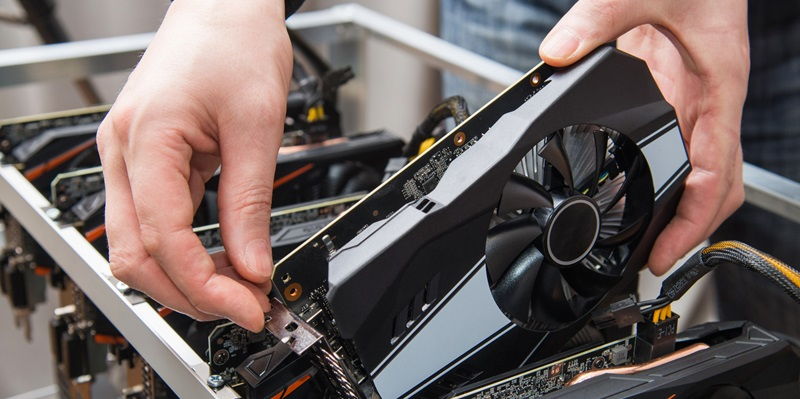AMD has taken a significant step towards supporting future RDNA architectures with the early enablement of RDNA 3.5 “GFX1150” GPU in Linux 5.7. This move signifies a focus on bringing support for upcoming RDNA architectures, which promise improved efficiency optimizations and architectural tweaks for the next-generation Ryzen 8000 APUs. Let’s delve into the details of RDNA 3.5 and its integration in Linux.
Overview of RDNA 3.5
The GFX 1150, categorized as RDNA 3.5, represents a soft refresh with efficiency optimizations and architectural tweaks. It is built specifically for the next-gen Ryzen 8000 APUs. RDNA 3.5 aims to deliver enhanced performance and power efficiency. Taking advantage of the lessons learned from previous iterations, AMD has designed this architecture to optimize the Ryzen 8000 APUs for various compute-intensive tasks.
RDNA 3.5 in Strix Point APUs
One of the most exciting developments is the upcoming Strix Point series of APUs, slated for introduction in 2024, that will incorporate the RDNA 3.5 “iGPU.” These APUs are expected to feature 8 working group processors (WGP) and a total of 16 Compute Units, providing a significant boost in graphical performance. The inclusion of RDNA 3.5 in Strix Point APUs will undoubtedly elevate the gaming and graphics capabilities of future AMD-powered devices.
Progress in the Linux kernel
The early batch of GFX1150 GPU enablement codes for RDNA 3.5 has already been merged into the Linux kernel. AMD’s collaboration with the Linux community ensures timely support and compatibility for its hardware. By integrating RDNA 3.5 support into the Linux kernel, AMD demonstrates its commitment to providing a smooth and seamless experience for Linux users.
Smooth Linux enablement
Unlike a generational upgrade, the Linux enablement process for RDNA 3.5 is relatively straightforward for AMD. This ease of integration can be attributed to the smaller individual changes required compared to a significant architectural overhaul. The streamlined process allows for efficient enablement, reducing the time between architectural advancements and Linux compatibility.
Integration with the RADV driver
While the initial codes for RDNA 3.5 have been merged into the Linux kernel, full support for RDNA 3.5 in AMD’s RADV driver is still pending. Once the RADV driver receives complete support for RDNA 3.5, the code elements will be fully integrated, allowing for enhanced performance and compatibility across AMD’s graphics solutions.
Market demand and potential new products
AMD has not officially provided detailed information about the RDNA 3.5 refresh. However, the company has clarified that the release of new products will be guided by market demands. This suggests that AMD may cater to specific needs and introduce innovative solutions based on RDNA 3.5, further expanding their product lineup.
Completion of RDNA 3 ASIC
Rumors of a potential RDNA 3 refresh have been put to rest as AMD confirms the completion of the original RDNA 3 ASIC. This clarification ensures that RDNA 3.5 is not merely a refresh but a significant step forward in AMD’s GPU architecture, promising tangible improvements in performance and efficiency for future devices.
Release expectations for Strix Point APUs
The highly anticipated Strix Point APUs featuring RDNA 3.5 are expected to make their debut in 2024. This release will mark a milestone for AMD, bringing their latest GPU architecture to consumer devices and further solidifying their position in the market. With the inclusion of RDNA 3.5, the Strix Point APUs will deliver impressive graphics capabilities and improved overall performance.
Unrevealed GPU clock speeds
While various details about RDNA 3.5 have been uncovered, the exact GPU clock speeds for this architecture have not been revealed yet. The clock speeds are a crucial aspect that directly impact performance and efficiency, leaving enthusiasts eagerly awaiting further information from AMD.
In conclusion, AMD’s early enablement of the RDNA 3.5 GPU in Linux 6.7 indicates their efforts to support future RDNA architectures and deliver improved efficiency optimizations and architectural tweaks. The integration of RDNA 3.5 in the upcoming Strix Point APUs, along with the progress made in the Linux kernel, promises enhanced graphics capabilities and compatibility for AMD-powered devices. As AMD continues to refine their GPU architecture, market demand may drive the release of new products based on RDNA 3.5. Exciting times lie ahead as AMD’s RDNA 3.5 architecture paves the way for advanced gaming and computing experiences.

